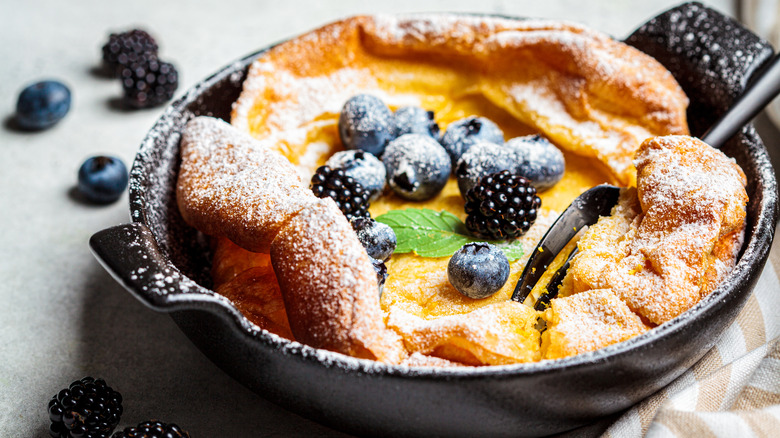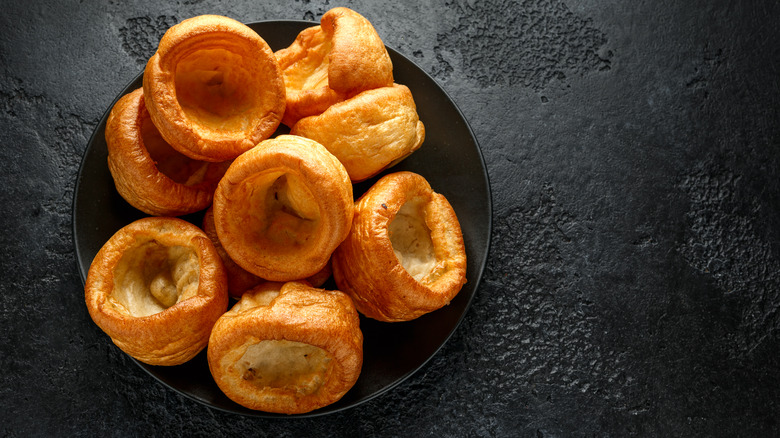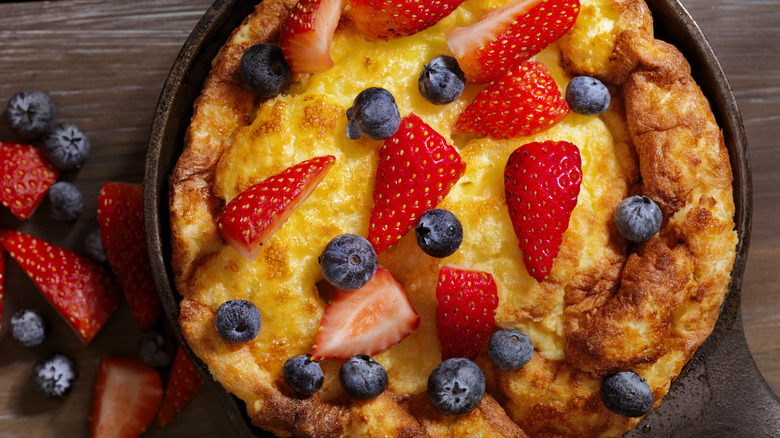The Key Difference Between A Dutch Baby And Yorkshire Pudding
When it comes to cooking, it's always fun to see the variations of dishes that people come up with using similar ingredients. One such food argument that has crept up in the past has been between a Dutch baby and Yorkshire pudding. To those in the know, a Dutch baby really is just a large, puffy pancake, while Yorkshire pudding is a savory side dish that has graced meat-heavy meals in England for centuries. Yet, some people tend to confuse the two as being the same, owing to a similarity of ingredients and appearance.
However, one key difference distinguishes them: A Dutch baby requires sugar, while Yorkshire pudding requires salt. While it is evident that this little ingredient swap will change the flavor profile of the dish being made, you may not know that it also leads to other significant changes in the appearance and the purpose of the dish.
Why this key difference renders a Dutch baby so different from a Yorkshire pudding
The Dutch baby is believed to have originated in the U.S. in the early 1900s, though it was brought here by the German community, which is how it got its name. On the other hand, Yorkshire pudding was first recorded in a recipe book in 1747, "The Art of Cookery Made Plain and Simple."
Sarah Visintainer, the chef behind Half Batch Baking, delves into the science that makes these two dishes different. She highlights that adding sugar to the mixture of flour and eggs slows the eggs down in the cooking process. With the addition of sugar, the baked dish takes longer to reach a solid state. The result is a sweet, soft and tender shell with a caramelized exterior.
On the other hand, Yorkshire pudding is a savory dish made with salt. It doesn't achieve the same soft and fluffy texture as the Dutch baby, but instead, it has a tougher exterior and is more suitable as a side to meat dishes, which is its intended purpose.
Other differences between a Dutch baby and a Yorkshire pudding
Apart from adding sugar, many Dutch baby recipes call for vanilla extract – an ingredient you would never find in a traditional Yorkshire pudding. Another key difference is that Dutch babies are made in a skillet with butter, while oil is the preferred cooking medium for Yorkshire puddings (though beef drippings or fat are ideal for achieving a crisp texture with a hollow interior).
In texture and appearance, the two differ significantly. Where Dutch babies are fluffy and soft like pancakes, Yorkshire puddings are crisp outside but hollow and soft inside. The latter is often served with savory fillings like bacon and eggs, mushroom and brie, or pesto and goat cheese. On the other hand, the Dutch baby is usually served with toppings instead of fillings. These include various kinds of fruit or syrup. Each serves its own purpose, so next time you have a hankering for a tasty baked delight, perhaps you should try each of these out for yourself and take your pick.


